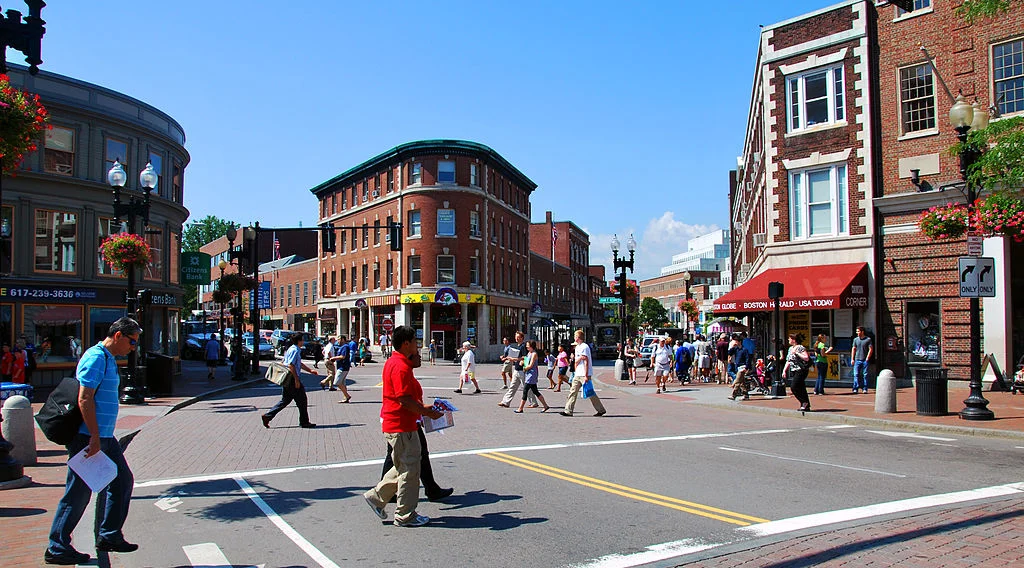Are Beautiful Cars Responsible for Our Overbuilt Roads?
Why is America so obsessed with cars?
If you’re a regular Strong Towns reader, your knee-jerk response might be something like this: Because we’re pretty much forced to be. After all, most of us alive on Earth today can’t even remember a time before the highway system, because auto-centric infrastructure has dominated our landscapes since long before we were born. After generations of policy that’s effectively subsidized driving into becoming our transportation default, many of us have always lived in cities where cars are a necessity, whether or not you’re an auto buff.
But of course, the roads we drive on (and that force us to drive) aren’t the whole story. The other half is a little simpler—and a little more seductive.
The dapper young designer Harley Earl sailing to Europe in 1932 for the annual auto shows
In his new book, bestselling author William Knoedelseder argues that the automobile would never have taken over the American psyche without the vision of just one man: Harley Earl, Vice President of Styling for General Motors, father of the Firebird and the tailfin, and arguably, the inventor of the modern American car as we know it.
If you think that last title would more rightly belong to Henry Ford—and if you’ve never even heard of Harley Earl—you wouldn’t be alone. Knoedelseder is a life-long auto enthusiast and son of a Chrysler executive, and even he hadn’t stumbled upon his subject until shortly before he embarked on the project that would become Fins: Harley Earl, the Rise of General Motors, and the Glory Days of Detroit. But when he found the story of an eccentric, 6’5”, likely dyslexic car customizer who changed the way the auto industry thought about style, he was stunned.
“Henry Ford was the opposite [of Harley Earl],” the author says. “He wanted a car to be functional, to be able to carry tools from here to there and blah blah blah, but he didn’t have an artistic bone in his body. He didn’t want to keep changing his cars, how they looked. The way the human spirit aspires to things, aspires to beauty—he didn’t have a sense for any of that.”
But Earl did. He grew up as the son of a wagon maker in the Los Angeles hills above the first Hollywood studios. After a boyhood spent helping his father make Roman chariots and chuck wagons for the movies, he turned his attention to customizing car bodies for silent film stars in an era when most vehicles were boxy, ugly, and uniform. While Ford motors had mastered an assembly line process that had enabled manufacturers to churn out new cars quickly, Ford wasn’t design-minded enough to bother with finding a way to churn out multiple body designs simultaneously. As a result, the average American car owner usually didn’t replace their Tin Lizzie until it wore out—because what else was there to buy?
Employees of Earl Automobile Works in Los Angeles in 1918. Harley helped his father, J.W., build the former carriage repair shop into the sixth-largest maker of auto bodies in the country.
“Everybody liked cars, but they didn’t like those clunky cars that Ford was making,” Knoedelseder says. “The movie stars Harley knew had money to spend to have a fancy body. And they wanted it made by this guy over here who had really great clothes and was very charming. That started it all off.”
Soon, Detroit called, and tasked Earl with an enormous job: to design movie star-worthy cars that the average American would want to take on their family road trip. And then to do it again, and again, and again—so often that soon, a car had become a status symbol that all but had to be replaced every three years or less if the driver wanted to keep up with the times.
And all those new car enthusiasts needed roads to drive on. “Back at the time, you would be astonished to learn how little of our roads in America were actually paved, Knoedelseder says. “That really kept car sales down.” Between automotive industry lobbying efforts and President Eisenhower’s desire to ensure the country was ground war-ready—not to mention the sugar high of the growth ponzi scheme itself—all those new roads weren’t that hard to build.
But Knoedelseder and his book make a compelling case that none of that asphalt would have been laid had Earl and designers like him not made cars themselves sexy and aspirational to a generation of Americans—and after he’d created that desire, developed the technology necessary to give the people what they wanted. “I ask in the book, I think, what would it have been like if Harley Earl hadn’t happened?” Knoedelseder says. “What if he hadn’t come up just the way he had—if he hadn’t been sitting in the middle of the birth of the movie industry in its infancy and had this sort of creative drive and loved cars? [The big car makers] weren’t even thinking about design back then. Yeah, their cars worked, but Harley asked: what do they look like?”
What would America have looked like without Harley Earl? And how can we harness his extraordinary sense of what stimulates the human spirit to reach beyond itself, and use it to build stronger places—so cars as beautiful as his can become something we enjoy, not something that we’re required to rely on if we want to participate fully in our places?
(Cover photo via Creative Commons. All other photos courtesy of the Earl family.)










Some complain that getting rid of parking mandates is just an underhanded way of making auto use harder and harder in cities. But harder for whom, exactly?